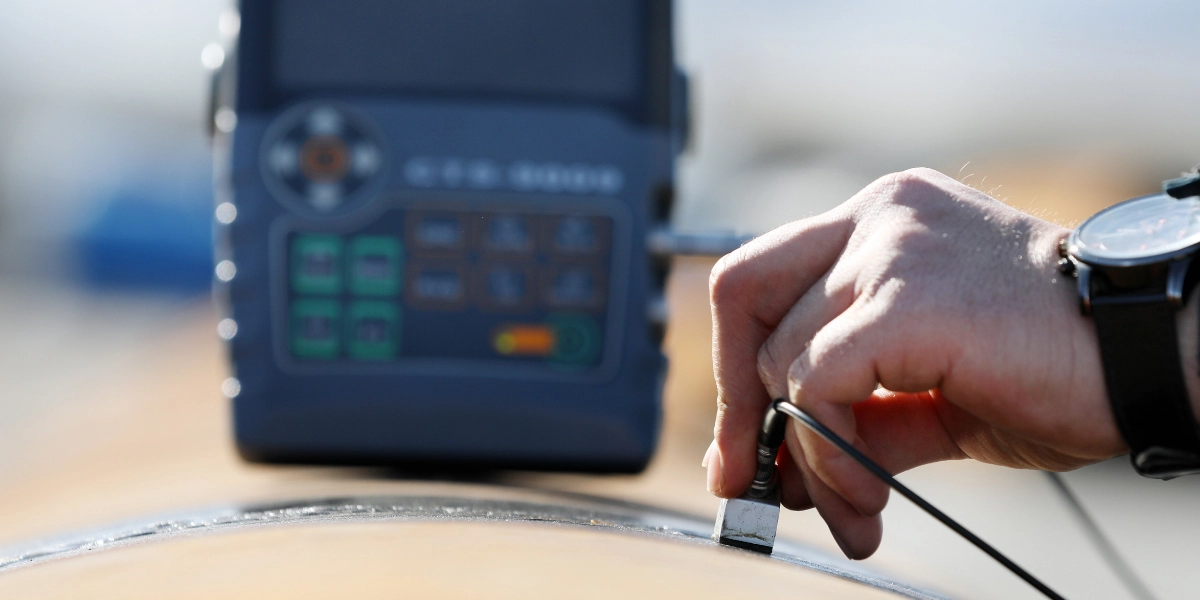
- Blog
- 5 Aug 2025
What is Non-Destructive Testing in Composites
Composite materials are widely used in industries like aerospace, automotive, marine, and medical thanks to their strength, low weight, and durability. To ensure these materials perform safely and effectively, it’s essential to inspect them for any hidden damage or defects—without causing harm. That’s where non-destructive testing (NDT) comes in. This smart inspection method allows engineers and technicians to evaluate composite parts without breaking or altering them. In this article, we’ll explore what non-destructive testing means, why it’s important in composite applications, and which methods are commonly used to examine materials like carbon fiber, glass fiber, and composite sandwich structures.
What is Non-Destructive Testing?
Non-destructive testing (NDT) is a group of inspection methods used to check the quality, strength, and safety of a material or structure—without causing any damage. Instead of cutting, drilling, or breaking the material to look inside, NDT uses special tools like sound waves, X-rays, or thermal cameras to find problems such as cracks, voids, or weak spots.
This type of testing is especially useful in advanced materials like composites, which are made from two or more combined materials. Since composites often have complex internal layers, NDT helps detect internal defects that can’t be seen from the outside.
For example, in composite testing, NDT can reveal early signs of fatigue or stress in a part before it fails. This makes the method ideal for quality control during production, as well as for regular safety checks during a product’s life. Whether it’s a car body panel, a wind turbine blade, or an aircraft wing, NDT offers a fast and reliable way to test performance—without damaging the part.
Importance of Non-Destructive Testing in Composites
Composite materials are strong and lightweight, but they can still develop hidden problems over time—especially under repeated stress, impact, or harsh conditions. That’s why non-destructive testing is so important in industries that use composites. It helps identify defects like delamination, cracks, fiber breakage, or moisture inside the material without having to cut it open.
In composite fatigue testing, NDT plays a key role. It allows engineers to study how a composite reacts to repeated loading and unloading over time. With this information, they can improve design, predict failure points, and make the product safer and more reliable.
NDT is also essential for maintaining composite sandwich structures, which are often used in aircraft and marine applications. These structures have layers of composite material with a lightweight core in between. Damage in the inner core is hard to spot, but with techniques like ultrasonic testing or thermography, it becomes easier to detect problems before they grow.
Overall, non-destructive testing gives confidence that a composite part is safe to use, both when it’s newly made and throughout its service life.
Common Non-Destructive Testing Methods for Composites
There are several non-destructive testing methods used to inspect composite materials. Each method has its own strengths and is chosen based on the type of defect being searched for, the shape of the part, and how deep the inspection needs to go. These techniques help detect problems without harming the part, making them ideal for quality control, maintenance, and long-term monitoring.
Here are the most common non-destructive testing techniques used in composite inspection:
Ultrasonic Testing (UT)
Ultrasonic testing uses high-frequency sound waves to look inside a material. A small probe sends sound into the composite, and if there’s a defect like a void or delamination, the sound wave reflects differently. This method is very good for detecting hidden flaws in thick or layered composite parts. UT is often used in composite sandwich structures, where the damage may be deep inside.
Radiographic Testing (X-ray and CT Scanning)
Radiographic testing uses X-rays or CT (computed tomography) scans to create detailed images of the internal structure of a composite. This method can show cracks, air pockets, or material separation. While it requires more time and safety measures, CT scanning gives a clear 3D view, making it useful for complex parts or critical areas in aerospace or medical devices.
Thermographic Inspection
This method uses heat and an infrared camera to spot changes in a composite’s surface temperature. When a material is heated or cooled, damaged areas react differently compared to healthy areas. Thermographic inspection is a fast way to scan large surfaces and is especially useful for detecting impact damage or delamination in thin composite panels.
Acoustic Emission Testing
Acoustic emission testing listens for tiny sounds made by the material when it is stressed. When a composite starts to crack or break inside, it gives off energy in the form of sound waves. Special sensors pick up these sounds and help identify the location and type of damage. This method is often used during composite fatigue testing to track how the material behaves under pressure.
Visual and Tap Testing
These are the simplest non-destructive methods. Visual testing involves looking for surface defects such as cracks, discoloration, or fiber damage. Tap testing uses a small hammer or tapper to gently hit the surface. A trained technician listens to the sound: a hollow or dull sound may mean internal damage. While basic, these tests are quick and useful for initial inspections or routine checks.
To sum up, non-destructive testing is a vital tool in the world of composite materials. It helps manufacturers, engineers, and technicians ensure that parts are safe, strong, and ready for long-term use—without damaging them during inspection. From advanced methods like ultrasonic and CT scanning to simple visual checks, each technique plays a key role in composite testing. By applying the right method, it’s possible to detect hidden flaws early, improve performance, and extend the life of critical components. Whether you’re working with high-performance parts or everyday applications, non-destructive testing offers smart, reliable solutions for better results.


